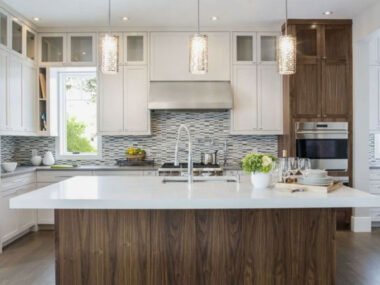Introduction to Custom Home Building
Constructing a bespoke residence signifies the realization of a dream for numerous individuals and families, offering a unique chance to customize every element of their living environment. Unlike purchasing a pre-constructed home, where choices are limited to what’s available on the market, the custom home building process empowers homeowners with control over everything, from the architectural style to the minute details of interiors. This gives life to spaces that mirror one’s lifestyle and aspirations.
Embarking on constructing a custom home is a gratifying yet intricate endeavor. It demands a substantial investment of time, resources, and careful planning. By understanding the multifaceted steps and considerations inherent in this process, prospective homeowners can avoid common mistakes and significantly enhance the likelihood of seeing their dreams actualized in a cohesive and satisfying reality. Each element is crucial to the project’s success, from financial planning, construction estimator services ; to selecting a reliable contractor.
Benefits of Building a Custom Home
The decision to build a custom home offers numerous advantages that extend beyond the mere aesthetics and functionality of the structure. One of the most significant benefits is the ability to imbue the house with a unique personality through personalization. Homeowners can establish the parameters for all architectural and interior design decisions, crafting living environments that authentically reflect their identity and meet their practical needs. This degree of personalization is particularly advantageous for individuals with unique lifestyle needs, such as those requiring arrangements for multigenerational households or the incorporation of home office environments. A residential elevator, for example, can provide both convenience and accessibility, ensuring that every floor of the home is easily accessible to all family members.
Moreover, constructing a custom home can lead to meaningful cost savings over the long term. By intentionally selecting materials and technologies that enhance energy efficiency, homeowners can experience reduced utility bills and contribute positively to environmental sustainability. This proactive approach lessens the home’s ecological footprint and positions it as a forward-thinking asset with the potential for appreciating value. Furthermore, custom homes offer the flexibility to incorporate design elements that accommodate future growth or changes, such as additional family members or evolving functional needs, thereby adding lasting value.
Key Considerations Before Starting Your Project
Comprehensive financial planning is imperative before commencing construction to guarantee that the project remains within budgetary constraints and is executed without undue pressure. A crucial first step is establishing a well-defined budget that accounts for all construction phases and potential unforeseen expenses. This financial groundwork should include examining financing options, securing a mortgage if necessary, and creating a contingency fund to buffer against unexpected costs.
In addition to financial planning, another key consideration is ensuring effective construction site security. Protecting the site with proper security measures—such as fencing, surveillance cameras, and restricted access points—helps prevent theft, vandalism, and ensures a safer environment for workers. This proactive step minimizes delays and potential financial losses, which can have an impact on the overall budget.
Selecting the ideal location for the custom home is equally critical. Factors such as proximity to work, schools, amenities, local climate, and potential for future development should all be considered. Additionally, understanding local zoning laws and community regulations can prevent legal headaches. These laws can dictate everything from the size and height of the structure to its distance from neighboring properties. Choosing a reliable contractor involves methodical research, reviewing portfolios of past projects, and verifying professional credentials to ensure they possess the expertise to transform a vision into reality.
Step-by-Step Guide to Custom Home Construction
- Design Phase: The homeowner’s dreams begin to take shape in the design phase of custom home construction. This involves close collaboration with experienced architects and interior designers who can help translate abstract ideas into detailed plans. Considerations like room layouts, structural elements, and aesthetic preferences are discussed and finalized during this phase. It is also an opportune time to incorporate features that enhance the sustainability and efficiency of the home, such as solar panels or advanced insulation.
- Planning Phase: The planning phase is where preparations for the actual construction take place. This includes acquiring all necessary permitsand approvals from local authorities, which can sometimes be lengthy and complex. Site preparation tasks, such as clearing and leveling the land, are also conducted at this stage. Financing should be finalized during planning, ensuring funds are available for each stage of construction. A detailed timeline for the project is established to keep the construction on track and help manage the expectations of all parties involved.
- Building Phase: With the site prepared and permits secured, the construction of the custom home begins in earnest. This phase consists of key milestones, such as laying the foundation, framing the structure, installing plumbing and electrical systems, and eventually moving to interior and exterior finishing. Regular site visits by the homeowner can help ensure the construction remains aligned with the original plan and allow any necessary adjustments to be made promptly. Clear and consistent communication with the construction team helps address challenges quickly and maintain progress.
Mistakes to Avoid During the Building Process
Even with thorough planning, several common mistakes can derail the custom home-building process. A chief error is neglecting the importance of planning. Insufficient planning often leads to rushed decisions that cause delays or require expensive revisions. Dedicating ample time to the planning phase is critical, as ensuring all eventualities are considered and adequately prepared for. When planning a luxury home, integrating a home elevator can enhance accessibility and future-proof the house for changing mobility needs.
Underestimating the project’s budget and timeline is another frequent miscalculation. A practical budget with a contingency fund for unexpected costs can help reduce financial stress. Additionally, establishing and aligning on a concrete timeline with your builder can help manage expectations, ensuring the project progresses smoothly without the stress of continuous delays. Prioritizing open lines of communication between all stakeholders is essential to maintain alignment and address any deviations from the planned course.
The Future of Custom Home Design
The landscape of custom home design is evolving rapidly, inspired by technological advancements and environmental consciousness. Technology is enabling more ingenious construction processes and brighter living conditions. The integration of smart home technologies, which allow for enhanced security, energy management, and overall connectivity, is increasingly becoming a norm in new custom homes. These advancements cater to a more convenient and efficient lifestyle, offering control over everything from lighting and temperature to entertainment systems via a smartphone or central hub.
Sustainability is also pivotal in shaping the future of custom home design, with builders and homeowners embracing green building practices. This entails the utilization of materials and construction techniques that minimize environmental effects, enhance energy efficiency, and promote enduring sustainability. To explore goals related to sustainable living, the United Nations’ sustainability goals offer valuable insights.
Expert Tips for a Successful Custom Home Build
Embarking on a custom home build with a clear framework and informed guidance can lead to a successful outcome. One critical aspect is maintaining effective collaboration with builders and contractors. Open and frequent communication ensures that all parties align with the homeowner’s vision, facilitating a smoother construction process and swift resolution of emerging issues.
Conducting inspections at different construction phases is an essential practice that significantly enhances a project’s success. These inspections not only assure quality control but also allow necessary adjustments to be made before proceeding to subsequent steps. Understanding the warranties and post-construction services the builder offers also provides peace of mind, as these can safeguard the investment and address any issues that may arise after the home’s completion.
Resources and Inspiration for Your Custom Home
The journey to creating a custom home is as expansive as one’s imagination. Inspiration may be obtained from various sources, such as design literature, dedicated online platforms, and home design television programs that present creative concepts and styles. These resources can inspire creativity, help refine ideas, and provide practical solutions to common design challenges. Embracing various sources of inspiration ensures that your custom home fulfills your immediate needs and stands as a timeless reflection of your dreams and aspirations.










